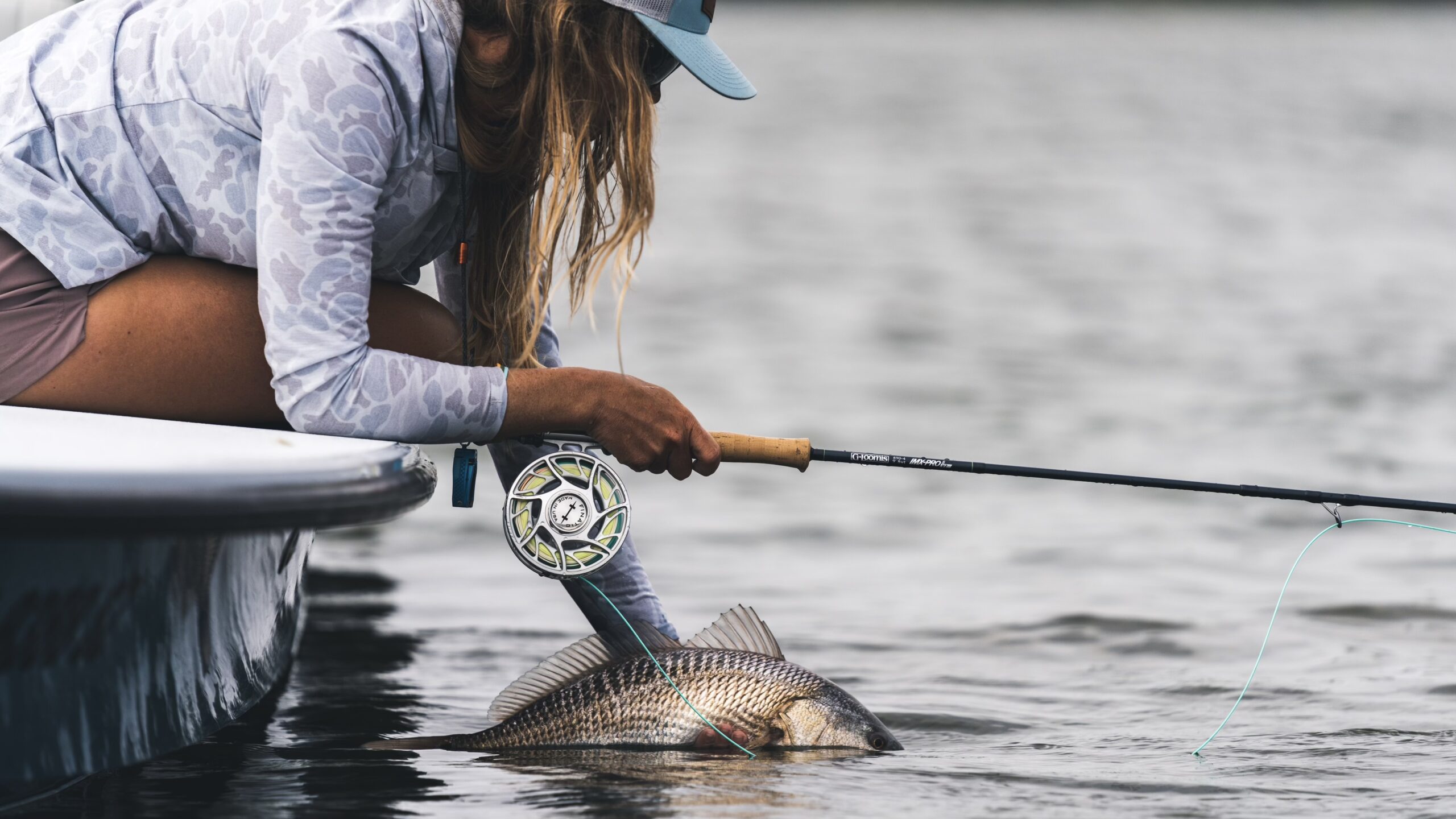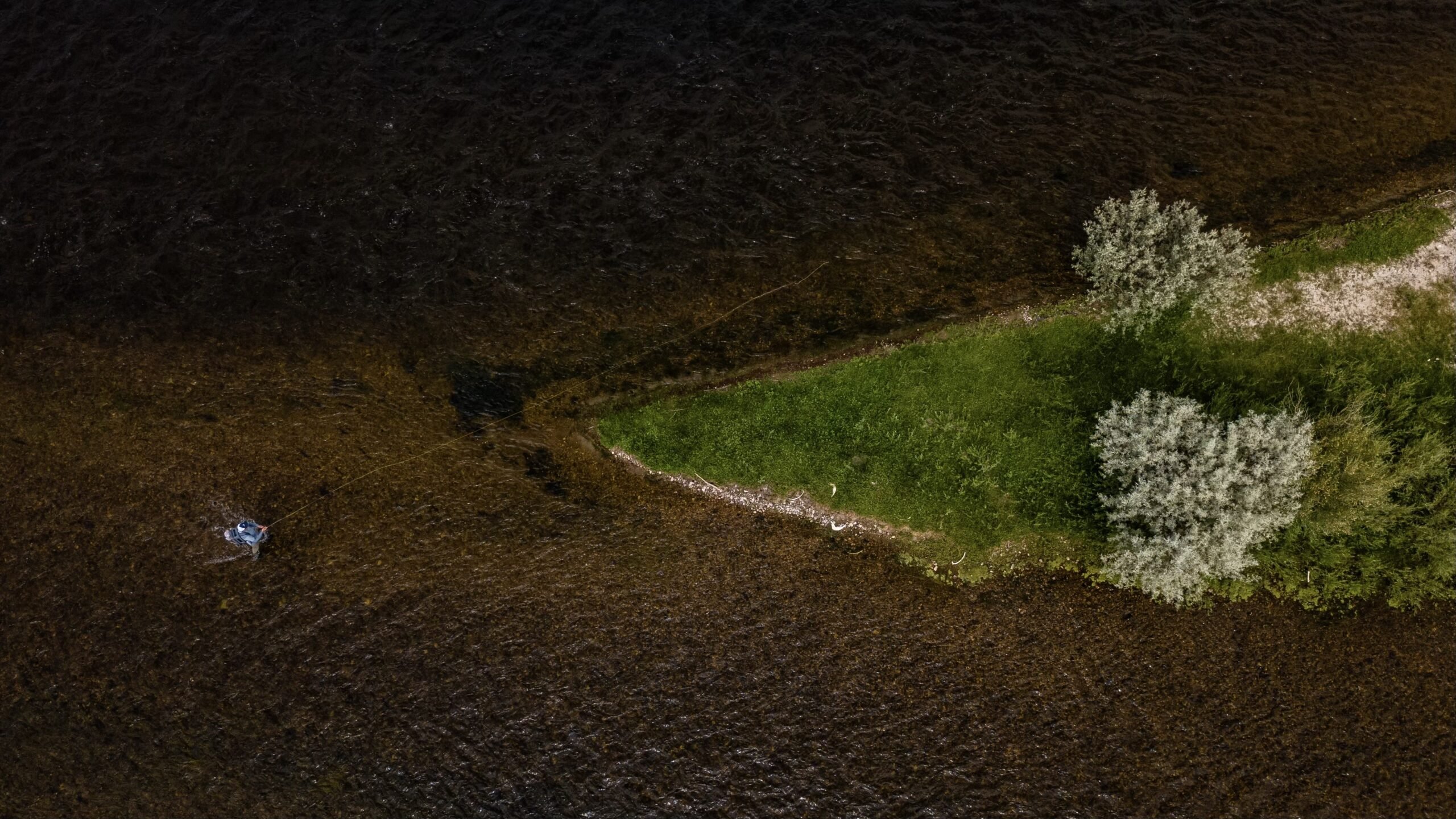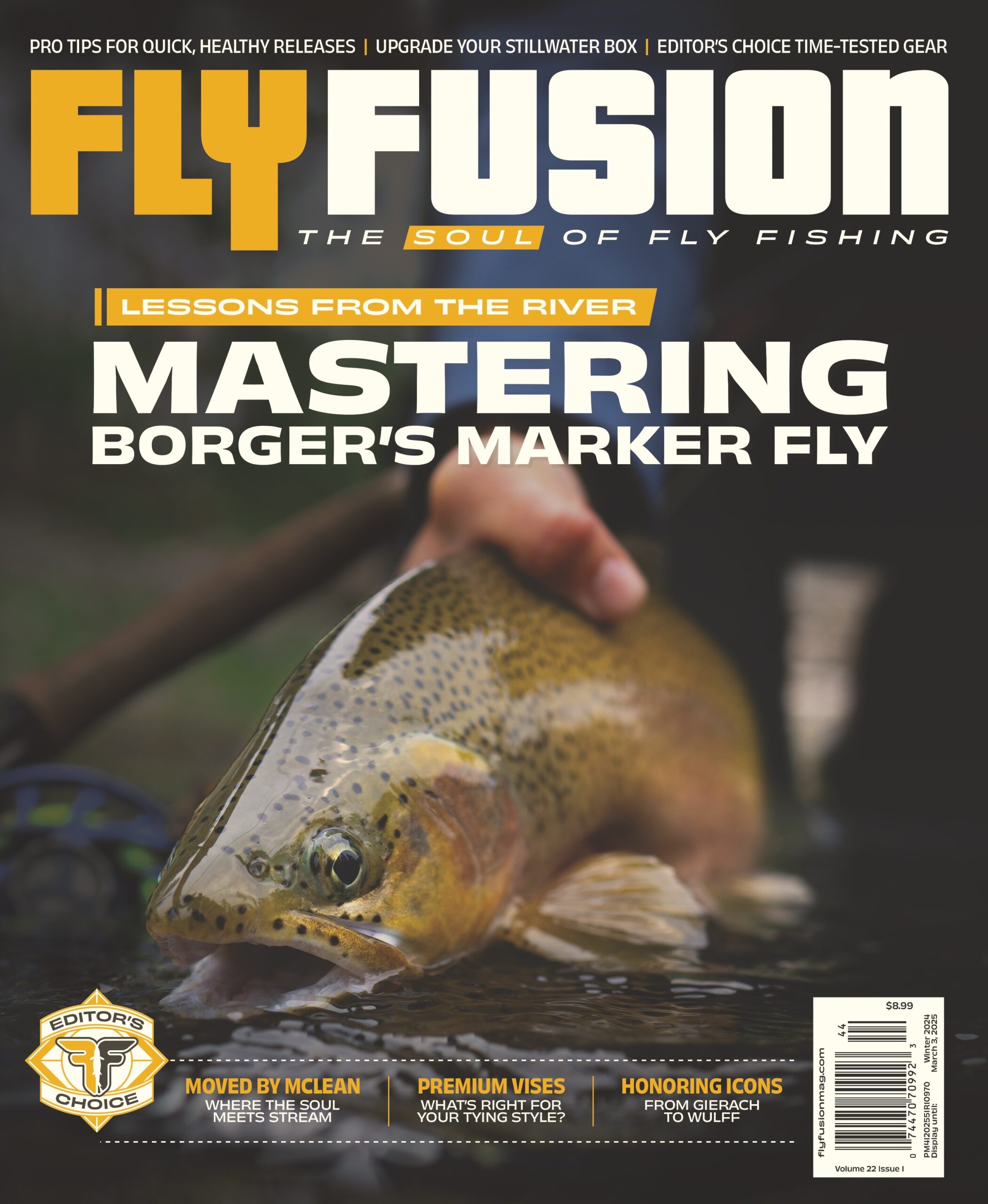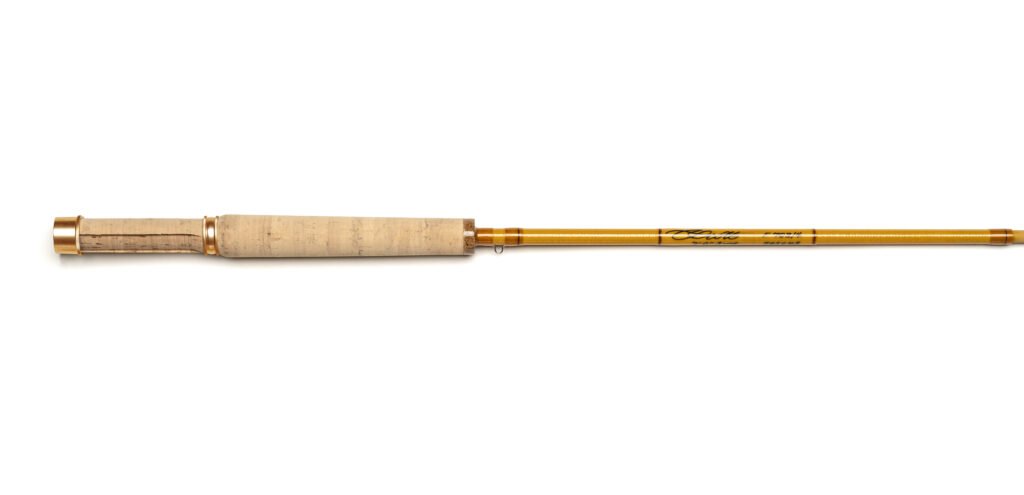
Identity crisis: What is this pattern supposed to be?
I don’t know if a fly can have an existential crisis, but if it could, it might begin with the question What am I supposed to be?

Identity crisis: What is this pattern supposed to be?
I don’t know if a fly can have an existential crisis, but if it could, it might begin with the question What am I supposed to be?

At G. Loomis, we build tools that enhance natural ability, boost effectiveness, and expand tactical opportunity. We do this for the dawn patrollers. The mid-day grinders. The last-light renegades. For those who make time on the water a top priority. Introducing IMX-PRO V2S, a continuation of our 40-year commitment to provide anglers with actions that put the bug where your brain wants it every time.
Rolled for pumped performance in salty environments, IMX-PRO V2S actions are tuned for utility in three specific areas: improved tracking in the wind, lifting generous lengths of line before a re-cast, and fish fighting control. G. Loomis engineers designed these versatile actions with gobs of power through the bottom half of the rod but, most uniquely, developed a slightly tighter tip to minimize tailing loops and improve tracking and line pick-up. A proprietary blend of technologies — Conduit Core and GL7 resin system — provides surplus strength and impact resistance without the extra weight, creating a blank that allows anglers to stay frosty when a “send” becomes a “bend.”
That said, don’t take it from us. Experience this diverse set of purpose-driven actions for yourself. Because, after all, actions speak louder than words. More on the new IMX-PRO V2S rods here.

I’ve got two primary goals when I fly fish. One is to catch fish, and the other is to catch fish in places where I’m all by myself. To achieve those goals, it’s not uncommon for me to hike long distances. When Fly Fusion HQ sent me the Simms Flyweight Boots to test out, it was kind of a “you had me at hello” type scenario. The quarter-top boots shed some noticeable weight with less material in the boot’s height, but also in construction. I tested boots in size-11 which weighed 51 ounces for the pair (which is just slightly over three pounds. The Flyweights were comfortable to hike in, and as a bonus I reduced the poundage of my checked baggage for my Rocky Mountain trip this past summer. With less material, I also found the boots to dry faster, which was also a bonus for traveling.
After wearing them over thirty days on the water thus far, here’s what I found appealing. The boots show no sign of abnormal deterioration. They’re dirty, but they’re not falling apart—no broken seams, no tattered material, no cuts, or gashes on the soles. The boots hold up, which is good because I plan to wear them beyond the testing period. With the type of fishing I did, throughout the summer and fall, I didn’t notice a trade-off. I didn’t miss the higher ancle support, and I didn’t miss the stiffness of a sturdier boot. On top of that, I’m impressed with Simms Vibram soles. On a grip scale, with studded felt being a ten and tennis sneakers being a one, I’d place Simms Vibram soles at a solid eight, which I think is quite good for a rubber sole boot. The industry has come a long way in the last few years. I waded confidently and completely upright and have the added peace of mind knowing I’m not spreading micro-organisms from stream to stream. ~ Derek Bird, Founding Editor


Looking for the perfect gift for the fly fishing enthusiast in your life? Each year our Editorial Staff spends a season on the water with a plethora of new gear. Following are some of our top picks. Check back all this week for more top gear…then stop by your local fly shop to pick up the latest issue of Fly Fusion to read how all this gear performed after a summer of relentless testing!
Waiting to go fishing, on the other hand, requires an entirely different kind of patience, which admittedly I don’t possess. I realized this when my good friend Chris and I took off in a floatplane one stormy Friday, embarking on a summer weekend trip we’d been planning for months. The pilot wasn’t optimistic about reaching the destination, but he did everything he could to get us to the lake as scheduled by flying low through the valleys under the heavy cloud cover. He navigated us within about 15 minutes of our destination before we ran into a wall of impassible cloud. Shortly after the midair U-turn, the pilot came over the headsets and said, “Sorry guys. We can try again in the morning.”


We are excited to announce that Fly Fusion Magazine has a brand-spanking new App available on the App Store and Google Play! Now you can all your favourite Fly Fusion articles right in your pocket for reading while you are on the go! The winter issue (and all 2024 issues) are live now for your convenience. Check back often to snap up all the back issues too!

The new issue of Fly Fusion is out NOW! Dive in to fuel your passion and don’t forget to share with a fishing buddy who needs a bit of the same.
Fishing the Marker Fly by Gary Borger
Master the art of fishing during heavy hatches! Learn to spot rises, pick the perfect flies, and target trophy fish near the bank. With expert casting techniques like the ‘C’ Pickup and Elliptical Stroke, you’ll fish smarter and tangle less.
On (and After) the Take by Jim McLennan
Hone your skills in ethical catch-and-release fishing. From barbless hook techniques to no-touch releases, ensure your catch swims away strong. Bonus: Tips for stress-free underwater photos!
A Norwegian Fly-Fishing Family Adventure by Teddy Cosco
Set your sights on Norway’s Gaula River! This family journey weaves adventure and connection with a shared passion for fly fishing, culminating in epic salmon catches.
Editor’s Choice: Time-Tested Reviews
Explore Fly Fusion’s 2024 top picks for rods, reels, and waders. Our team has tested it all—gear that’s durable, innovative, and eco-friendly. Upgrade your fishing game today!
…and much more!
HURRY! This is your last chance to purchase tickets for the 2024 Virtual International Fly Fishing Film Festival! Watch anywhere you like with as many friends and family as you like for less the cost of a single ticket! Ticket are only $15 and are available now through December 31st. Once you purchase, you will have access for a full 7 days!
OR! Subscribe to Fly Fusion Streaming for $4.95 per month (or $49.95/annually) and watch every season of IF4, plus Fly Fusion TV, The Buffet Series and hundreds of other fishy films!
AND! When you subscribe to Fly Fusion Streaming you can pick up your one year subscription to Fly Fusion Magazine for the discounted rate of ONLY $25! Order now and we will send you the next published issue. What could be better than 2 hours of fly fishing adventures followed by a full year of the best stories and images on the planet?!?
As always, there will be draws for prizes following each virtual screening AND one lucky ticket holder will be the recipient of our year-end GRAND PRIZE!
This year, the Scott Fly Rod Company proudly celebrates their 50th anniversary. “It’s been a journey filled with fun, firsts, camaraderie, and a half-century of handcrafting high-performance fly rods,” states Scott president, Jim Bartschi. “In contemplating the most fitting tribute to the anglers who fish Scott rods, the rodsmiths who craft them, and the rod designs of Harry Wilson, Larry Kenney, and myself, we picked one rod from each decade that exemplifies Scott innovation and, in some way, changed the way we fish.”
The 50th Anniversary Edition fly rods were chosen from an award-winning series of Scott rods that are even more celebrated by the anglers who fish them. For those anglers, these are never-part-with rods. Rather than simply replicating the originals, Scott has built the rod blanks to spec with a resto-mod approach to finishing them. Though instantly recognizable to Scott history buffs, these anniversary rods are finished with today’s best-in-class components and construction techniques. In celebration, the Scott Fly Rod Company offers these tribute fly rods with a heartfelt thank you to the whole Scott family.
F 703/4
 When Harry Wilson founded the Scott Fly Rod Company in 1974, he built a name for himself and the brand by making some of the most coveted light-line multipiece fiberglass fly rods. At a time when the typical fly rod was a heavy, clunky 8-foot 6-weight two-piece rod, Scott’s light-line multipiece rods opened up new opportunities for anglers fishing cold, clear streams with dry flies by providing light, responsive, and smooth rods for the task. Advanced tapers and the Scott hollow internal ferrule were central to accomplishing this feat. No model exemplifies this better than the F 703/4.
When Harry Wilson founded the Scott Fly Rod Company in 1974, he built a name for himself and the brand by making some of the most coveted light-line multipiece fiberglass fly rods. At a time when the typical fly rod was a heavy, clunky 8-foot 6-weight two-piece rod, Scott’s light-line multipiece rods opened up new opportunities for anglers fishing cold, clear streams with dry flies by providing light, responsive, and smooth rods for the task. Advanced tapers and the Scott hollow internal ferrule were central to accomplishing this feat. No model exemplifies this better than the F 703/4.

Mayfly Outdoors, the award-winning manufacturer of high-performance fly fishing products and parent company of Abel Reels, Ross Reels, and Airflo, is excited to announce that world-renowned fly fisher, guide, author, and conservationist April Vokey has joined the Mayfly family as a brand ambassador.
Known for her work through Anchored Outdoors and years of guiding in some of the world’s most iconic fisheries, Vokey has become a respected authority in fly fishing, conservation, and education. Her ability to connect with anglers of all skill levels, coupled with her dedication to preserving rivers, has solidified her role as a leader in the industry.
“I couldn’t be more excited to join the Mayfly Outdoors family. I’ve respected Ross, Abel, and Airflo for decades, and having the chance to represent them now is both an honor and a full-circle moment,” Vokey shared. “These brands stand for more than just fly fishing—they embody a deep respect for craftsmanship, adventure, and the wild places that inspire us. I’m looking forward to working with the team, sharing new ideas, and continuing the tradition of creating products that truly connect anglers to the heart of the sport. This partnership feels like the perfect fit, and I can’t wait to see where it takes us.”
As an ambassador, Vokey will engage in a range of initiatives, including product testing, collaborating on educational content, and offering valuable insights for product innovation. She will also continue her advocacy for conservation, working alongside Mayfly to support their ongoing commitment to habitat preservation and community-driven stewardship.
“April truly embodies what our brands stand for—performance, craftsmanship, and respect for wild places we love,” said Jeff Wagner, CEO and President of Mayfly. “We’re beyond excited to have someone with her passion, expertise, and authenticity representing Ross, Abel, and Airflo. April’s influence and knowledge will be an incredible asset as we continue to innovate and honor the traditions of fly fishing for future generations.”
This collaboration marks a new chapter for Mayfly Outdoors as the company strengthens its ambassador roster and continues to develop industry-leading fly-fishing products.